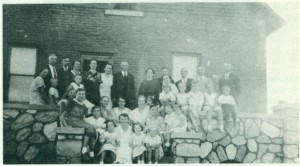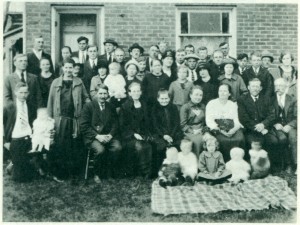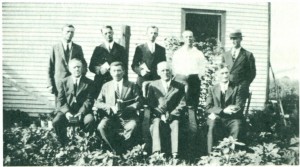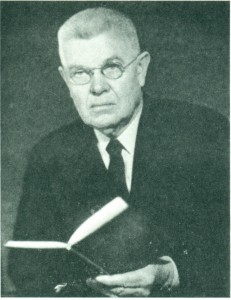
No doubt ever existed among the Mennonite immigrants of that time concerning whether or not they should worship together. “No Sunday without a religious service” had been the watchword before coming to Canada, and the same watchword was to remain in effect. For this reason, smaller and larger worship units appeared almost spontaneously in various places, at times with a minister in charge, and at times by simply having a sermon read. On occasions, a Sunday school only was conducted. The John J. Dick home at Cottam was the site of some of these assemblies. As many as 30 children went to Sunday school there. The John Bergs of Kingsville also had services at their home, and in Coatsworth they were held in the home of John Martens. Similar meetings were held around Leamington, for a time in an upstairs room of Arthur Brown’s Hotel.

Occasionally, through special efforts, all of the units assembled together as in the summer of 1925 when a first baptismal service was held in the Ruthven United Church with Rev. Janzen of Waterloo officiating. In the spring of 1926, the following three persons were elected as ministerial candidates: Jacob David Janzen, Nicolai Schmidt, Cornelius Tiessen. The first two were ordained on June 13 of the same year by Rev. Jacob Henry Janzen, again in the Ruthven United Church. Brother Cornelius Tiessen declined ordination at the time but continued to preach and to assist in youth work. Having been a teacher in Russia, he had taught classes preparing for baptism even before his candidature. Yet in spite of all attempts and efforts to narrow the ties between these people, the ties between them from 1925 to 1928 were rather tenuous and flexible.
Together with the Brethren Church
Families of Brethren persuasion were among the Mennonites when they came to Essex County. Since their number was relatively small, church services and Sunday school were merged with those of the General Conference Mennonites. Brothers Isaak Tiessen, Henry Tielman, and Daniel Boschman performed excellent services, the first one in preaching the word, the others in teaching it. Both persuasions, with one exception, worshipped together until 1932 even though formal organizational work in the respective conferences was going on before then. The Brethren met separately once per month before 1932.

Schellenberg, Abram Huebert (M.B.), Gerhard Reimer (M.B.), Wilhelm Toews (M.B.). Standing: Nicolai Schmidt, Isaak Thiessen (M.B.), N. N.
Driedger, Cornel. Tiessen, Jac. D. Janzen

